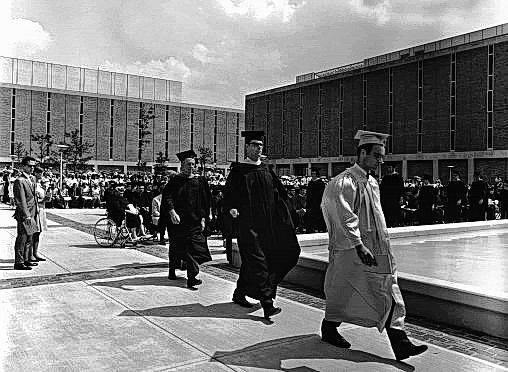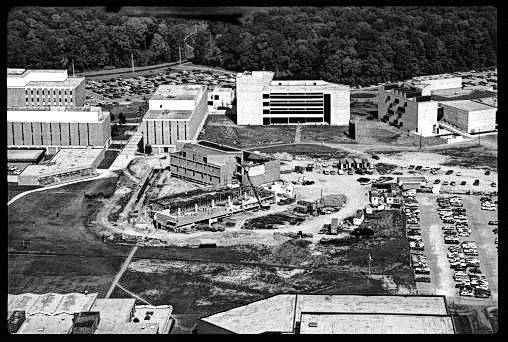

Editor’s note: this is the second of three in a series of stories highlighting the history of Wright State University in the spirit of its 50 anniversary.
FAIRBORN — Wright State University is recognizing its 50 anniversary. To celebrate how far the university has come, it is highlighting where it has been.
What is now the Student Union was built in 1969 followed by Hamilton Hall, the first dormitory, in 1970.
What would become the Lake Campus was originally affiliated with Ohio Northern University and offered courses in downtown Celina. It became a branch campus of Wright State in 1969 and over the years has experienced surging enrollments, a nearly doubling of bachelor degree programs, construction of residence halls and the purchase of nearly 40 acres for expansion.
Completed in 1973 on the Dayton Campus was Dunbar Library, a giant triangle resting on large pylons with a glass façade, a skylight roof and an atrium with an overlooking-balcony effect.
By the end of the 1970s, the university had 13 major buildings, including ones for the creative arts, medical and biological sciences, physical education and student activities, as well as a dormitory and school of medicine. The school’s unique tunnel system, one of the largest in the nation, attracted students with disabilities.
Wright State became firmly established on the higher education landscape in the 1980s. Its medical school graduated its first class in 1980, elevating the stature of the university. Rike Hall, home of the College of Business, was completed in 1981. The Nutter Center was built in 1990, a sports and entertainment arena that would draw millions of people to the campus over the years.
In 1992, the engineering school — which began in the 1960s as a small department in Fawcett Hall with a few faculty members and a single program — moved into the Russ Engineering Center, a newly built complex of classrooms and laboratories.
Construction of the engineering building was bankrolled by state funding and private donations. It was one of the first major fundraising efforts of the university, so everyone from President Paige Mulholland on down seemed to be engaged in raising money. It was hard work and sometimes involved a little luck.
Dean James Brandeberry recalled making a fundraising visit to Copeland Corp. in Sidney in hopes of getting a $1,500 donation, although he never mentioned an amount. He was told that the company’s budget cycle had just ended, but that a donation for Wright State would be made the following year. Sure enough, Brandeberry got a call from Copeland the next year from a company official who told him Wright State had been put in the budget for $50,000.
The largest single private donation for the new engineering building came from Fritz Russ, an engineer and owner of Systems Research Laboratories. Russ was personally involved in designing the sign facing Colonel Glenn Highway to make sure it was visible to motorists so they would know Wright State had a strong program in engineering.



